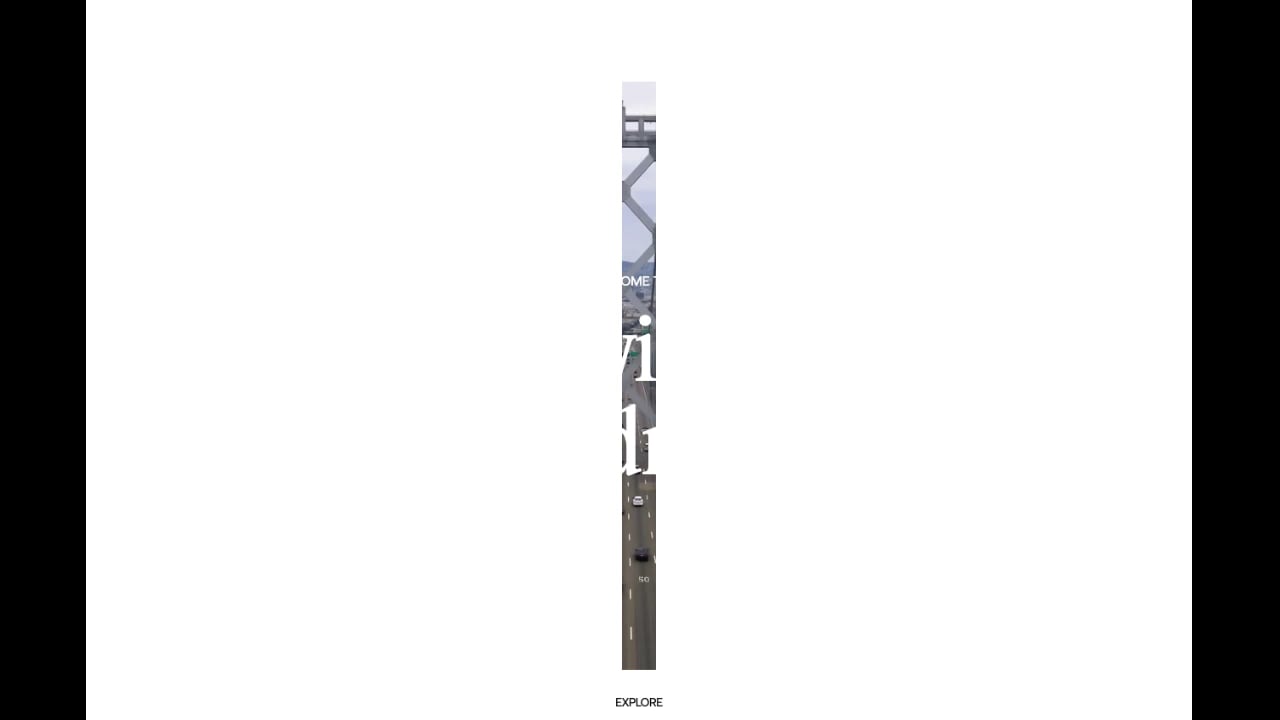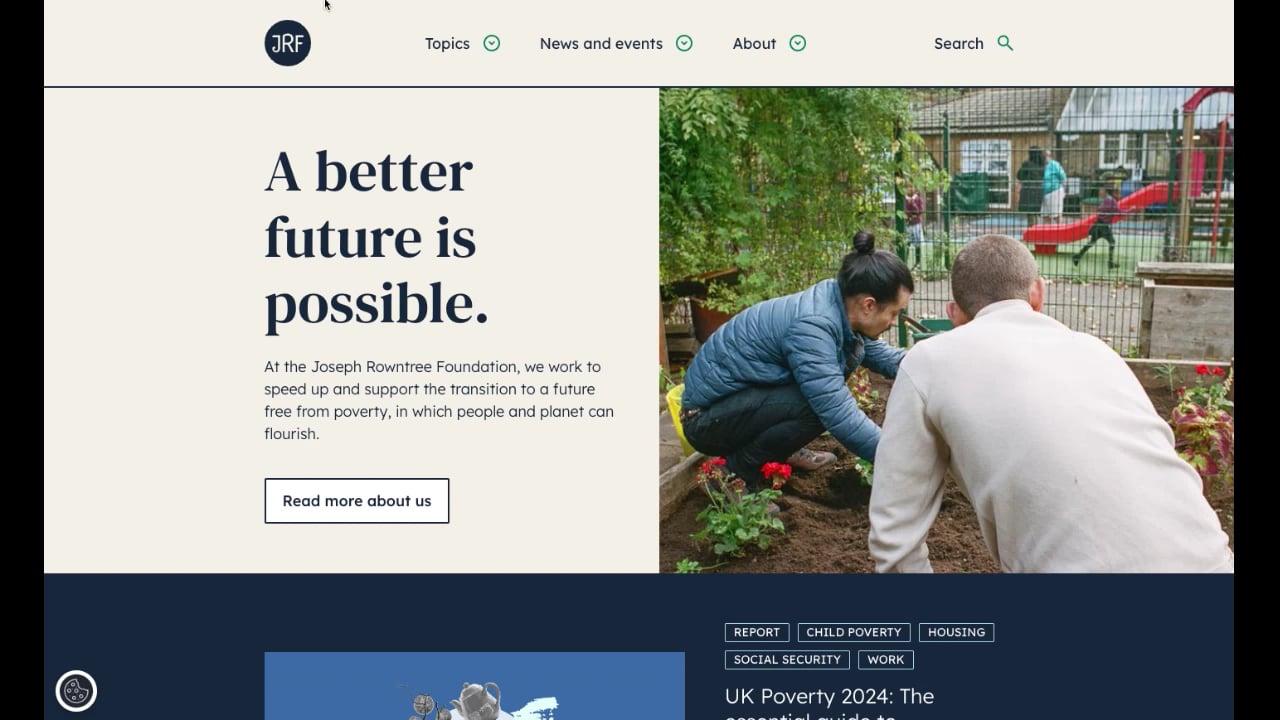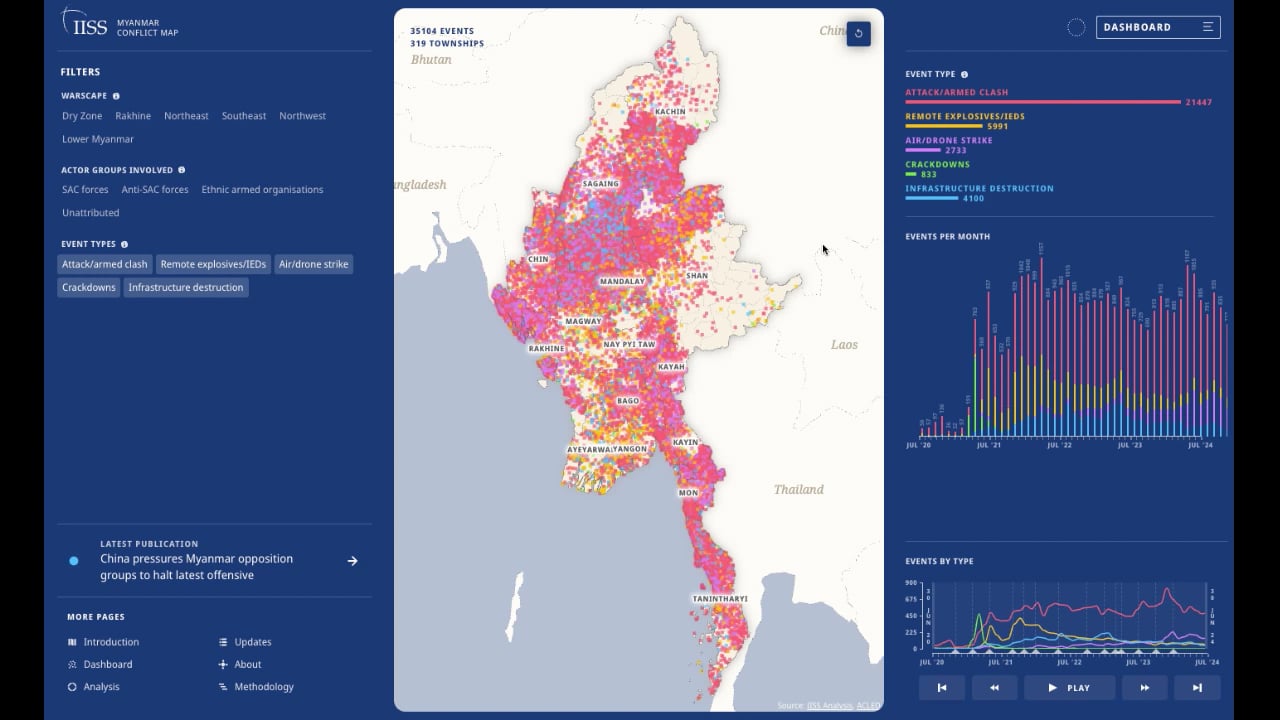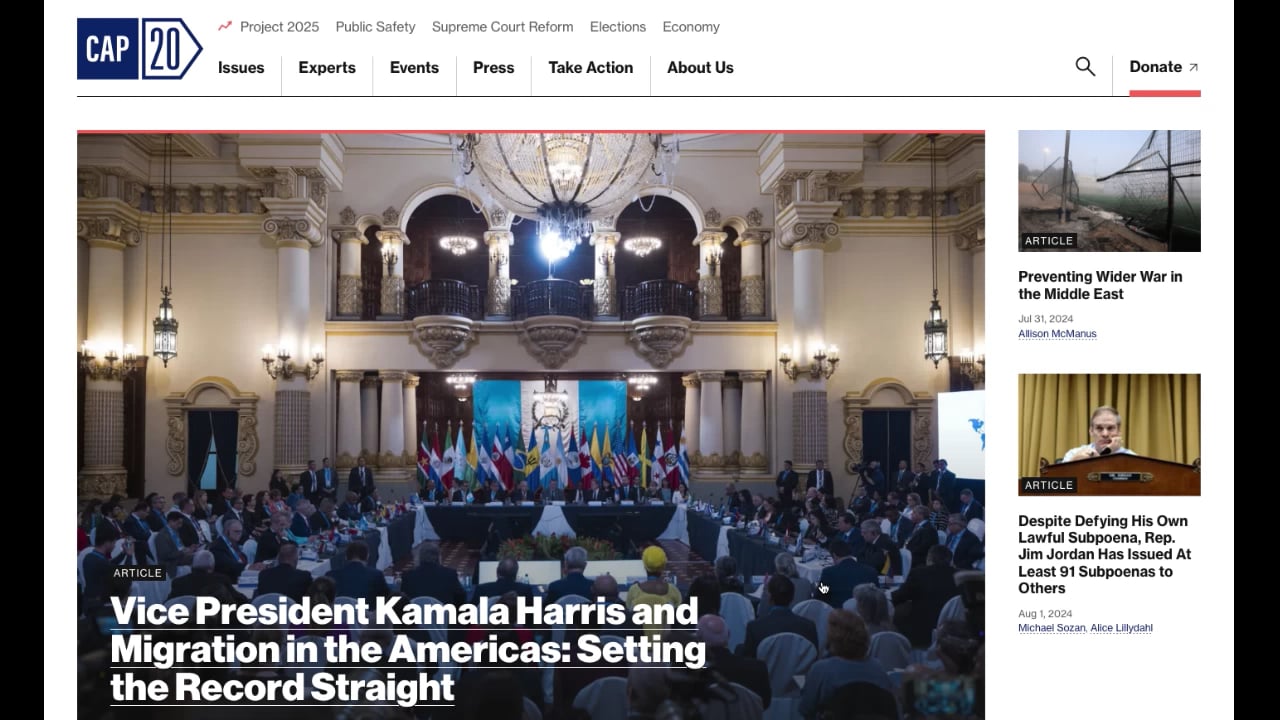Most think tank websites struggle to make the huge amount of content they publish easily navigable for users. We’ve uncovered the ones that solve this problem.
Intro
Think tanks play a valuable role in research, policy development and advocacy to help governments make better-informed decisions and implement more effective policies. Since think tanks primarily exist to collate and share information, their websites are an essential tool to host their research and engage users.
The best think tank websites:
- provide a clear structure to their content
- make their research easy to find
- successfully engage users to make them more likely to get involved with or become an advocate for their work.
Great web design is important, but great design for think tank websites isn’t about exciting visuals. Simplicity can be more effective, since the content and ideas should be the star of the show. For this reason, we often find minimal and clean designs to be the most effective for think tank websites.
A solid information architecture is essential. Think tanks publish large amounts of information through research, blog articles, press releases and beyond. This can quickly snowball into a large and complex website, so the IA needs to make it easy for users to find what they’re looking for.
There are hundreds of think tanks around the world, but few possess excellent websites. For that reason, we recommend think tanks draw their inspiration from other sectors that communicate a massive amount content effectively, such as news and current affairs websites.
However, some think tank websites do stand out, and we’ve collated them in this article. We believe elements of these sites successfully tackle common problems facing the sector, and help their content make an impact. Before we get into the list, we’d like to mention that we’re not endorsing any of these think tanks, this is merely a comment on the effectiveness of their website design.
Tony Blair institute for global change
The Tony Blair Institute for Global Change has a website that stands out in the sector for the level of care taken to the design and motion language.
Subtle animations on scroll and hover-states for teaser cards create a dynamic website that feels fun to explore. Visually, this is one of very few think tanks using photography in an interesting way, thanks to a well-thought-out photographic style that uses warmth and light to convey a sense of optimism that aligns with the site’s broader message.
The homepage also leads with a clear exposition of the institute’s mission: ‘here to turn bold ideas into reality. We help governments and leaders get things done’. This plain and simple language makes it easy for users to understand what the organisation does, which informs their subsequent usage of the site.
Joseph Rowntree Foundation
The Joseph Rowntree Foundation is the UK’s leading poverty advocacy think tank. We’re proud to work with them to deliver their website, so while we might be a bit biased, we genuinely believe this site stands out as a fantastic think tank website.
The Joseph Rowntree Foundation's website is notable for its pared-back simplicity and effective information architecture. Despite hosting a vast amount of research, the site's IA makes it appear deceptively simple. Just three items appear in the top navigation to avoid overwhelming visitors. Their research is organised into topics that align with what their users are looking for, rather than reflecting the organisation's internal structure.
These topic pages act as hubs, providing some useful context and the latest research in that area. Visually, the site's clean, clear design and soft colour palette give it a calming feel, that’s well-suited to what can often be challenging subject matter.
It’s also designed with accessibility in mind, and was assessed as being the most accessible charity website in the UK by the SilkTide index.
Read more about the Joseph Rowntree Foundation’s website in our case study or explore their website for yourself.
Institute for policy studies
The Institute for Policy Studies is a US think tank dedicated to building a more equitable society.
Their site is clean and clear, and doesn’t try to present too much information at once.
Above the fold on the homepage, the site restricts itself to a single sentence to convey its mission, with no snippets, buttons or other teasers competing for attention.
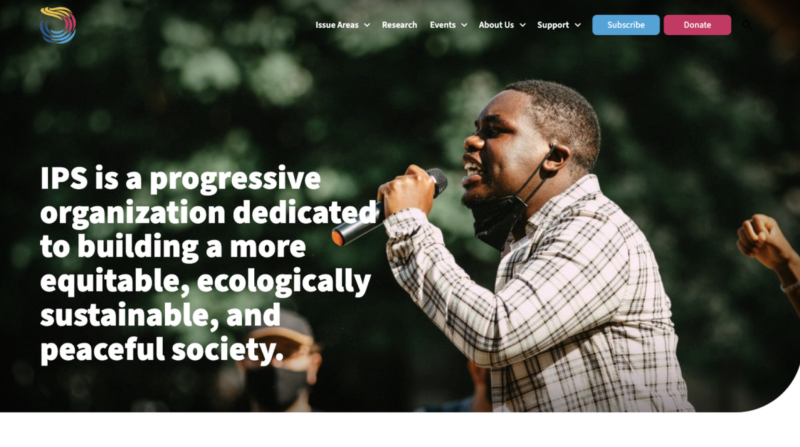
The information architecture arranges the key content by ‘issue areas’, which organise their work and reports on that topic.
Chatham House
Chatham House is a leading international affairs think tank, also known by its official name, the Royal Institute of International Affairs.
This is another think tank website designed & built by our team, but we believe it deserves mentioning on its own merits.
Chatham House has tens of thousands of pages of content, so its IA needs to make this large & complex site easy to navigate. Again, the key is the grouping of information by topics, which reflects the needs of users. The site also uses stats to convey its impact alongside its mission statement, using a counting effect to grab your attention.
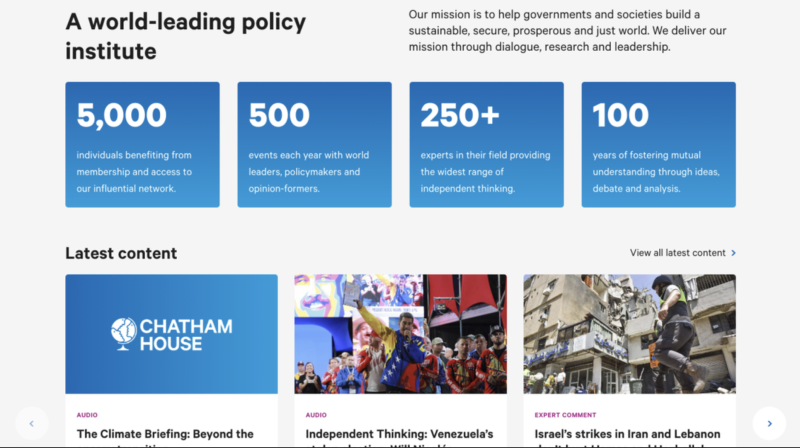
IISS – Myanmar conflict map
The International Institute for Strategic Studies’ website could be easier to use, but we wanted to acknowledge their groundbreaking use of interactive content to allow users to explore data and deep-drive into certain issues, such as its Myanmar conflict map.
The interactive conflict map walks users through key information and presents data with a consistent and effective style. Users can explore the data themselves, panning around the map to focus on different regions, or toggling filters classifying the types of attacks. It’s a powerful and novel way of presenting large amounts of information on a conflict, and therefore an excellent example of how think thanks can visualise data on their websites to engage users.
Centre for American Progress
The Centre for American Progress is a progressive, independent think tank that seeks to improve the lives of Americans with bold ideas and leadership. Its website is simple and confident. The bold typography, sharp corners and restrained colour pallet create a serious feel, which is ideal for a website dealing with important topics.
Most importantly of all, the information architecture is highly effective. It groups content based on the user's needs, dividing information into distinct sections. Opening the ‘Issues’ section reveals a full list of topics, but also highlights their five key priority areas using thumbnails to showcase these hub pages.
The hub pages gather key information on each topic in one place, presenting a summary of the issue, key stats, and profiles on the relevant experts. It also provides links to next steps so users can take action. These pages help users understand an issue more deeply before going onto read specific articles relating to it.
Summary
Think tank websites can often be somewhat confusing for new visitors, presenting an overwhelming amount of information at once. The most effective think tank websites avoid this by providing valuable context and structure through features like hub pages. Crucially, they have well-thought-out information architectures that make content easy to find.
If you're in a digital role at a think tank and are considering a website redesign or optimisation, our team of experts is ready to help you navigate these challenges and create a website that truly resonates with your audience. Reach out to us at [email protected] to talk about increasing your think tank's impact online.
